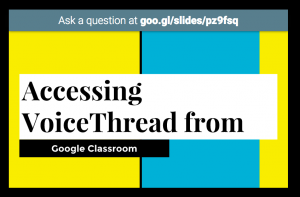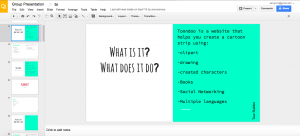The belief that people fear public speaking more than death has become so readily accepted that Jerry Seinfeld’s joke about preferring to be in the coffin than giving the eulogy is now cliché. Unfortunately, this fear prevents us from honing our oratory skills since we typically recoil from opportunities to practice. But practice we must! And as educators, we should encourage students to strengthen their oral communication skills as well, regardless of our disciplines.
Why does public speaking matter?
It is not sufficient for new college graduates to simply have knowledge of an academic subject; increasingly, it is necessary for students to gain additional skills which will enhance their future success. These include: the retrieval and processing of information, planning and problem solving, and written and oral communication skills. At a liberal arts institution, these skills are part of our mission. Unfortunately, however, communication skills are frequently reported by employers as one of the most notable deficiencies observed in new college graduates. We may be preparing whip-smart students who understand disciplinary content, but are we preparing them to communicate that information?
Including more opportunities for public speaking in your classes is essential for preparing students not only for their future careers, but also for their role as active, competent citizens. In addition, integrating more public speaking can differentiate your assessment by providing students with another way to demonstrate their knowledge other than papers or exams. There’s quite a bit of research indicating that quizzes and exams, especially those that contain simple recall questions, promote surface learning (1, 2). Students cram, then promptly forget the material (3). But preparing a presentation encourages deeper, longer-lasting understanding. Speeches and presentations put students into the role of teacher and requires them to understand their material well enough that they can explain it to others.
How do I incorporate more public speaking into my classes?
Many faculty are pressured to cover a lot of material in a single semester and public speaking takes time. But try to think about presentations in a variety of ways. There isn’t one single type of public speaking or one way to provide students with the opportunity to hone their oral communication skills.
While formal, prepared presentations are one of the best ways to improve both skill and content knowledge, giving students the chance to speak in front of the class in a more informal way is also beneficial. Think about your current in-class activities and assessments. Is there a way portions of those could require students to talk in front of the class? For example, role plays in language courses or presenting lab reports in the sciences. Impromptu speaking is also an effective, informal opportunity for students — learning to think on their feet is a valuable skill. It also helps boost confidence because students realize that if they can speak for a couple minutes without any preparation, surely they can present effectively with days or weeks of practice.
Also, keep in mind that speeches don’t need to be ten minutes long. In the business school, for example, brevity is valued and when students give pitches, they are often limited to 1 or 2 minutes. This is actually more challenging than preparing a ten-minute talk because students have to understand the information so well that they can condense it to the most important information and explain it clearly yet succinctly.
Another strategy to reduce the class time used by speeches is to make them team presentations. This gives students the opportunity to practice their oral presentation skills while learning other “soft skills” such as cooperation, time management, and conflict negotiation.
Finally, if you simply do not have class time to devote to presentations, consider having students give speeches outside of class and record them. There are a variety of tools available that allow students to upload their videos and receive feedback from instructors and classmates, such as Voicethread.
While it may be challenging to find time to integrate public speaking opportunities into our classes, I think it’s a challenge worth accepting. Let’s prepare our students to eloquently communicate their knowledge to the world!
References:
- Stanger-Hall, K. F. (2012). Multiple-choice exams: An obstacle for higher-level thinking in introductory science courses. Life Sciences Education, 11, 294-306.
- Simkin, M. G., & Kuechler, W. L. (2005). Multiple-choice tests and student understanding: What’s the connection? Decision Sciences Journal of Innovative Education, 3, 73-98.
- Weimer, M. (2102, November 19). Deep learning vs. surface learning: Getting students to understand the difference. Faculty Focus blog: http://www.facultyfocus.com/articles/teaching-professor-blog/deep-learning-vs-surface-learning-getting-students-to-understand-the-difference/




